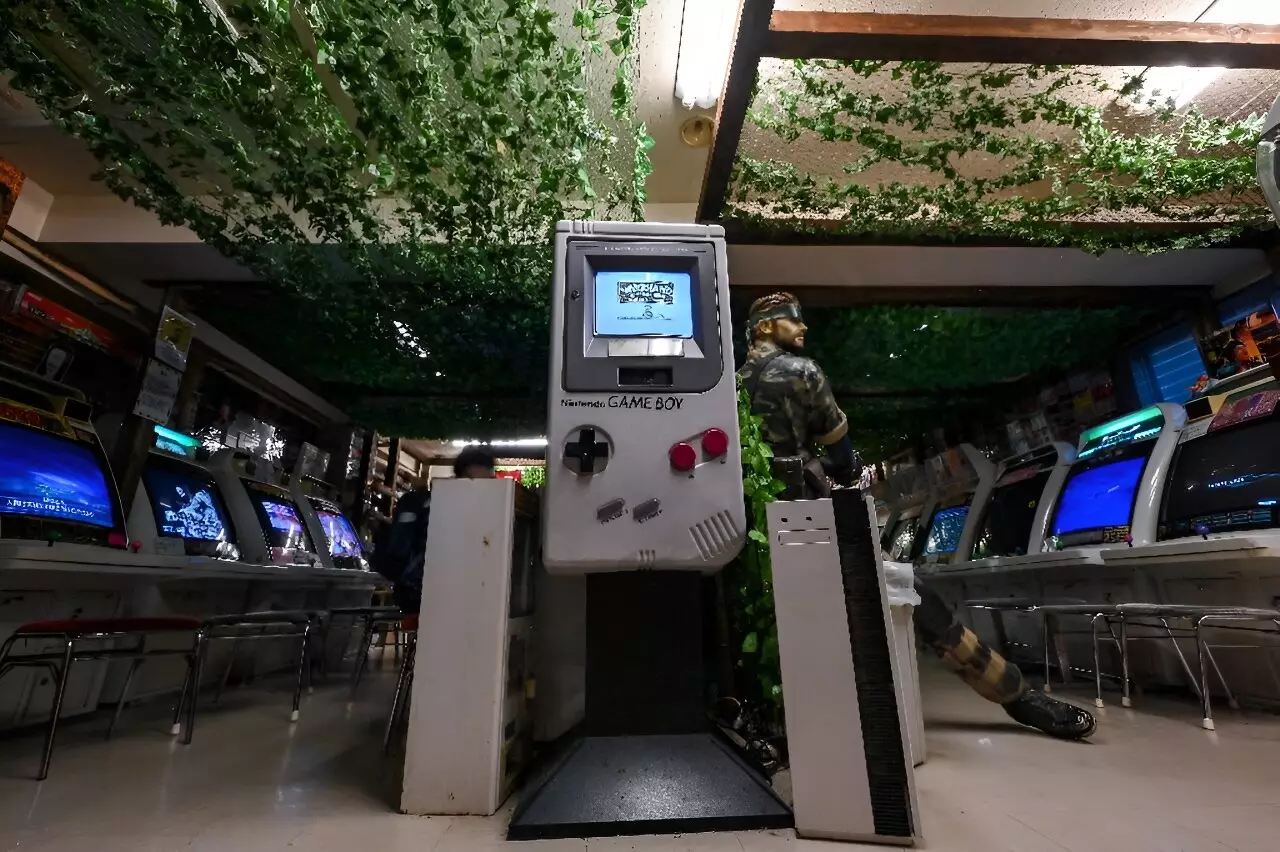In recent years, the allure of retro gaming has surged globally, with Japan emerging as a hotspot for enthusiasts seeking classic consoles and vintage games. This growing market is typified by bustling stores like Super Potato, located in Tokyo’s Akihabara district, renowned for its vibrant pop culture. With an ever-increasing number of tourists flocking to these hubs, the intersection of nostalgia and commerce creates a unique atmosphere that captivates both seasoned collectors and curious newcomers.
David Madrigal, a 23-year-old tourist from the United States, epitomizes the modern retro gamer. His visit to Super Potato was not just about making a purchase; it was a complete emotional experience akin to a child stepping into a candy store. Upon acquiring a PS Vita for $200—a console typically valued around $600 in the U.S.—he expressed his excitement and passion for older gaming systems. Super Potato’s multi-level layout is a paradise for fans, brimming with everything from Game Boy cartridges to meticulously preserved arcade machines. Such stores depict not only a retail environment but a loving homage to gaming history.
Yet, the prices can be eye-watering. A vintage Nintendo Game & Watch game from the 1980s, priced at a staggering 250,800 yen (approximately $1,750), exemplifies how deeply collectors are willing to invest in their passions. The rising curiosity for retro games can largely be attributed to international travel, with about 70-80% of Super Potato’s clientele being foreign visitors eager to snag a piece of Japan’s gaming legacy.
As Madrigal pointed out, many contemporary games often feel derivative compared to the creative breakthroughs of the past. This sentiment is echoed by video game historian Hiroyuki Maeda, who describes how manufacturers, once bold in their creativity, are now reticent to take risks. The nostalgia linked with older consoles offers more than just gameplay; it promises a connection to a time when innovation flourished in the gaming sector. Consumers are often drawn to their childhood memories associated with these systems, highlighting a critical distinction between eras in video game development.
Moreover, the unique marketing strategies of Japanese consoles like the Famicom and Super Famicom, which were given different branding and aesthetics abroad, further accentuate their appeal for many collectors. For many visitors, discovering consoles they have never encountered adds to the thrill of their purchase, validating the significance of cultural differences in the gaming industry.
Remote from the bustling ambiance of Tokyo is the story of Proudro, an avid collector who has transformed an old building into a sanctuary for gaming relics. Proudro’s tale reflects a different aspect of the collecting culture: the love for nostalgia and memory rather than just the act of gaming. At 50, he finds joy not necessarily in the games themselves but in the atmosphere—the sounds, the visuals, and the sheer history encapsulated within each piece of hardware on his shelves.
His experience encapsulates the radical shift in value attributed to old games over the years. Once regarded as worthless relics, certain vintage games have fetched astonishing prices, with some even selling for millions. Proudro’s anecdotes provide insight into the early days of collecting when rare finds could be extracted from dusty corners of toy shops for little more than the value of common produce.
Proudro’s journey into retro game collecting some 20 years ago was marked by serendipitous discoveries and modest pricing—an era that starkly contrasts today’s commercial landscape dominated by discerning collectors and aggressive resale strategies, made exponentially easier through the Internet. The nostalgia sparked from collecting these artifacts can establish a deep emotional resonance, bridging gaps across time and generational divides.
Yet, despite his enthusiasm for sharing this hobby, Proudro echoes a sentiment shared among certain collectors that Japanese treasures like vintage gaming consoles should remain in their homeland. This concern draws parallels to historical grievances surrounding cultural artifacts that were valued more abroad than in their country of origin.
The retro gaming phenomenon in Japan embodies a vibrant intersection of nostalgia, culture, and commerce. From the bustling floors of Super Potato in Akihabara to the tranquil collection of Proudro in rural Japan, the emotional narratives surrounding retro gaming provide a powerful reminder of gaming’s origins. As demand for these treasures continues to escalate, one essential question remains: how will Japan balance the preservation of its gaming history with the burgeoning global appreciation for its retro artifacts? The future could dictate a more robust acknowledgment of the intrinsic values and historical significance of these beloved gaming pieces, not only for collectors but for the broader cultural landscape.


Leave a Reply